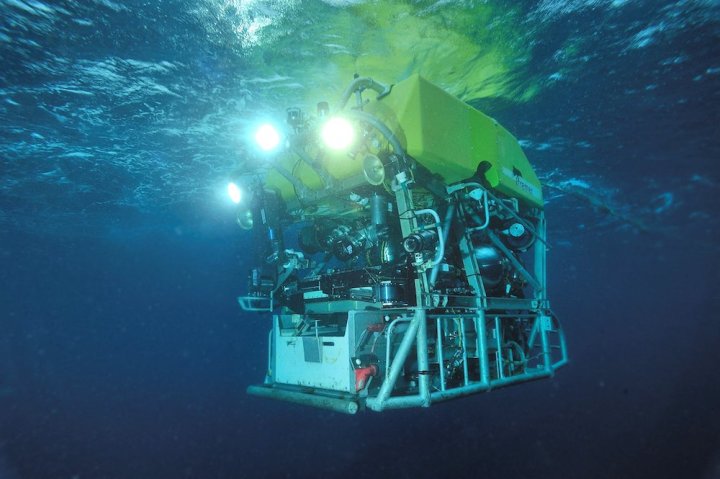
With only hours left to save the five members of the lost Titanic submersible, a French underwater robot called Victor 6000 could be the rescue effort’s last hope.
The crewless robotic sub can dive deeper than other equipment currently at the search site and is capable of reaching the wreck of the Titanic, which lies at the bottom of the North Atlantic about 3,800 meters (12,500 feet) down.
The robot can function for up to 72 hours at a time and is operated remotely by a team of 25 people on the surface. Victor 6000 will reach the search site aboard a French vessel on Wednesday night and begin its work soon after.
The tourist sub, operated by OceanGate Expeditions, went missing on Sunday during what was supposed to be an eight-hour trip to view the famous shipwreck. The vessel only has enough oxygen for about 96 hours, so a breakthrough in the search is needed on Thursday morning.
Olivier Lefort, the head of naval operations at Ifremer, the state-run French ocean research institute which operates Victor 6000, told Reuters that while the robot lacks the power to transport the 10-ton submersible to the surface, it may be able to free it if it’s become stuck at the bottom of the ocean.
“Victor is able to do visual exploration with all the video equipment it has,” Lefort said. “It is also equipped with manipulating arms which could be used to extricate the sub, such as by sectioning cables or things that would be blocking it at the bottom.”
Ifremer has experience of the Titanic’s resting place as it was part of the team that located the wreck in 1985.
Hopes were raised on Wednesday when a Canadian aircraft equipped with underwater search technology detected periodic banging sounds in the area, which could have been the submersible’s occupants banging on its wall to help rescuers locate them. But as of Wednesday evening, the vehicle remains missing.
On board the submersible is OceanGate Expeditions CEO Stockton Rush, British billionaire and adventurer Hamish Harding, Pakistani businessman Shahzada Dawood and his son Suleman, and French explorer Paul-Henry Nargeolet.


